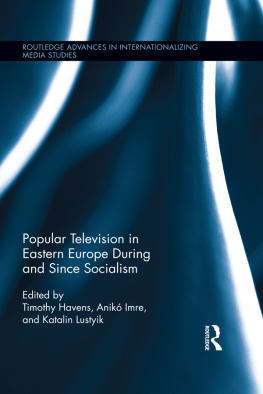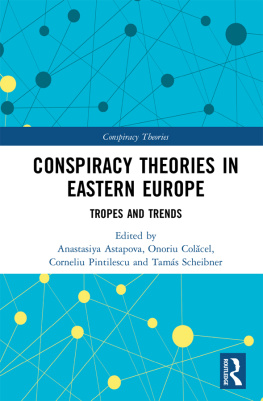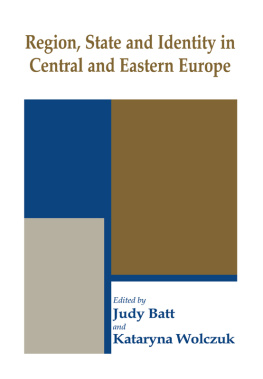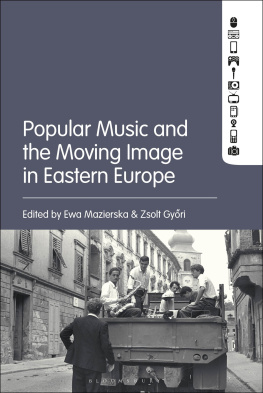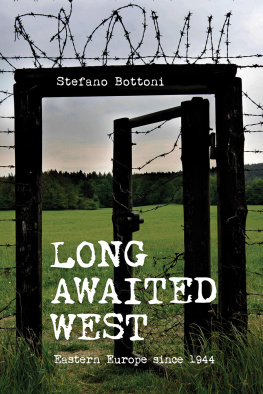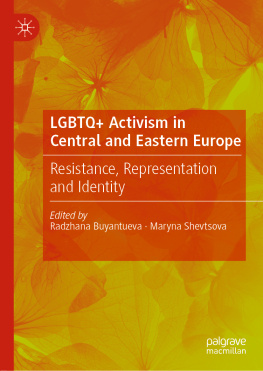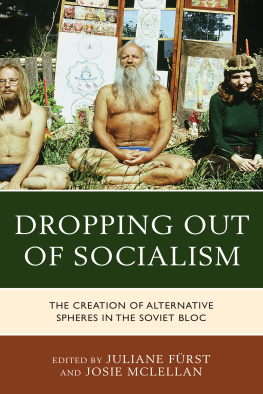Popular Television in Eastern Europe During and Since Socialism
Routledge Advances in Internationalizing Media Studies
EDITED BY DAYA THUSSU, University of Westminster
| Media Consumption and Everyday Life in Asia
Edited by Youna Kim |
| Internationalizing Internet Studies
Beyond Anglophone Paradigms
Edited by Gerard Goggin and Mark McLelland |
| Iranian Media
The Paradox of Modernity
Gholam Khiabany |
| Media Globalization and the Discovery Channel Networks
Ole J. Mjos |
| Audience Studies
A Japanese Perspective
Toshie Takahashi |
| Global Media Ecologies
Networked Production in Film and Television
Doris Baltruschat |
| Music, Social Media and Global Mobility
MySpace, Facebook, YouTube
Ole J. Mjs |
| Media Power and Democratization in Brazil
TV Globo and the Dilemmas of Political Accountability
Mauro P. Porto |
| Popular Television in Eastern Europe During and Since Socialism
Edited by Timothy Havens, Anik Imre, and Katalin Lustyik |
First published 2013
by Routledge
711 Third Avenue, New York, NY 10017
Simultaneously published in the UK
by Routledge
2 Park Square, Milton Park, Abingdon, Oxon OX14 4RN
Routledge is an imprint of the Taylor & Francis Group, an informa business
2013 Taylor & Francis
The right of the editors to be identified as the author of the editorial material, and of the authors for their individual chapters, has been asserted in accordance with sections 77 and 78 of the Copyright, Designs and Patents Act 1988.
All rights reserved. No part of this book may be reprinted or reproduced or utilised in any form or by any electronic, mechanical, or other means, now known or hereafter invented, including photocopying and recording, or in any information storage or retrieval system, without permission in writing from the publishers.
Trademark Notice: Product or corporate names may be trademarks or registered trademarks, and are used only for identification and explanation without intent to infringe.
Library of Congress Cataloging-in-Publication Data
Popular television in Eastern Europe during and since socialism / edited
by Timothy Havens, Anik Imre and Kati Lustyik.
p. cm. (Routledge advances in internationalizing media studies)
Includes bibliographical references and index.
1. Television broadcastingSocial aspectsEurope, Eastern.
2. Television broadcastingEurope, Eastern.History20th century.
3. Television programsEurope, Eastern. 4. Culture diffusion
Europe, Eastern. I. Imre, Anik. II. Havens, Timothy. III. Lustyik,
Kati.
PN1992.3.E8P67 2012
791.450947dc23
2012013786
ISBN: 978-0-415-89248-3 (hbk)
ISBN: 978-0-203-11020-1 (ebk)
Typeset in Sabon
by IBT Global.
Contents
TIMOTHY HAVENS, ANIK IMRE, AND KATALIN LUSTYIK
SABINA MIHELJ
ANIK IMRE
DANA MUSTATA
DOROTA OSTROWSKA
KATJA KOCHANOWSKI, SASCHA TRLTZSCH AND REINHOLD VIEHOFF
KATALIN LUSTYIK
TIMOTHY HAVENS, EVELYN BOTTANDO AND MATTHEW S. THATCHER
ADINA SCHNEEWEIS
SYLWIA SZOSTAK
ALICE BARDAN
IRENA CARPENTIER REIFOV, KATEINA GILLROV AND RADIM HLADK
FERENC HAMMER
ANNABEL TREMLETT
KSENIJA VIDMAR-HORVAT
Figures and Tables
FIGURES
.
TABLES
Introduction
Timothy Havens, Anik Imre and Katalin Lustyik
The three of us met serendipitously at back-to-back academic conferences in Budapest and Amsterdam in the summer of 2009, where the idea for this collection of essays first developed. At Beyond East and West: Two Decades of Media Transformation After the Fall of Communism in Budapest, we gathered frequently between sessions, talking excitedly about papers on Eastern European popular television in a conference otherwise largely devoted to journalism, democratic theory and communications policy. A week later, at the Ends of Television conference in Amsterdam, we found ourselves equally excited about several papers on Eastern European television, in a conference devoted mainly to Western European and American case studies, theories and concerns.
The quantity and quality of work on popular television in Eastern Europe that we saw at these two conferences convinced us of the need for an anthology such as Popular Television in Eastern Europe During and Since Socialism . Not only did we believe that television scholarship in the region had reached a critical mass that warranted its own site for collecting and reflecting upon issues that cut across the former Eastern bloc nations; we also felt that such a volume might spotlight, nurture and reclaim Eastern European television studies from the margins of both television studies and Eastern European media studies. As an intellectual endeavor, Eastern European television studies suffers from the Western nature of most television scholarship and theory, while the field of Eastern European media studies almost exclusively addresses questions of journalism, democracy and civic life.
CENTERING EASTERN EUROPE, CENTERING TELEVISION
The number of conferences, workshops and articles devoted to Soviet and post-Soviet popular culture has exponentially increased in the past 15 years. This attention follows Eastern Europes transition from state-controlled, relatively isolated national media systems to a progressively integrated European media sphere permeated by processes of globalization and media convergence. Such a transition, characterized by geographically uneven processes of democratization, marketization, the transformation of state institutions and civic nation-building within the region, has also been fueled by the staggered enlargement of the European Union. Televisions transformation has been especially spectacular, shifting from a state-controlled broadcast system delivering national, regional and heavily filtered Western programming to a deregulated, multiplatform, transnational system delivering predominantly American and Western European entertainment programming. Consequently, the nations of Eastern Europe provide opportunities to examine the complex interactions among economic and funding systems, regulatory policies, globalization, imperialism, popular culture and cultural identity.
At the same time, many of the changes currently sweeping Eastern Europethe globalization of media industries and programming, the collapse of non-commercial broadcasting, the impact of digitization and channel fragmentationhave also profoundly affected Western European nations. Despite these epochal changes in television, however, books and anthologies about European television continue to identify Europe with Western Europe and contain only a few references to Europes Eastern peripheries. Even recent volumes such as Television Across Europe: A Comparative Introduction (Wieten, Murdock and Dahlgren, 2000), Worlds in Common? Television Discourses in the Changing Europe (Meinhof and Richardson, 1999), Transnational Television In Europe: Reconfiguring Global Communications Networks (Chalaby, 2009), Imaginary Dream-scapes: Television Fiction in Europe (Buonanno, 2005) and A European Television History (Bignell and Fickers, 2008) only minimally address Eastern European societies, if at all.
By implication, anthologies and monographs that purport to cover European television and media, while consistently excluding or marginalizing Eastern Europe, perpetuate Western-centric perspectives and generalizations in their approaches, many of which simply do not apply to the very different economic, political and cultural trajectories of socialist and post-socialist television, which we explore below. Similarly, volumes on media globalization tend to bypass Eastern Europe: without meaning to trumpet our own horns, we nevertheless believe it is accurate to say that our own prior work offers some of the only exceptions to this tendency.

